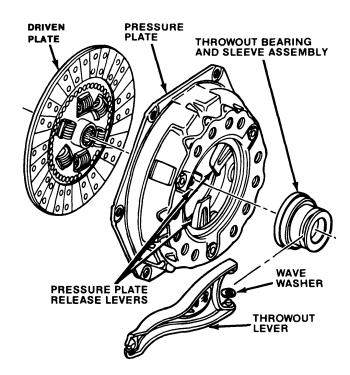mr.beatts
Member
I have a 1997 D22 with a QD32 motor. It's a central american model, but I don't believe it's any different than the asian/african/australian models.
When I first start moving in first gear my truck shakes/vibrates a little more than I think it should. This is especially noticeable at low speeds on steep inclines. The steeper the worse. However, this is only at low speeds. Once I pass between 10-15 km/h, depending on the steepness, the truck runs smooth again. The same happens in 4x4 as well. If I reverse up the same hill the symptoms do not appear. (That might be obvious to many of you, but I thot I'd mention it as I am not a mechanic by any means.)
What I want to know is if this is just normal behaviour. All the mechanics down here say it is normal, but I don't have much confidence in the Honduran mechanics, sorry. I've spoken to other owners of this model and some say they experience the same issue. If however, it is normal, I'll just deal with it.
So far, I have changed the clutch disc and pressure plate and machined the flywheel. I changed the transmission and engine supports. I changed the central driveshaft bearing. Note that all of these were aftermarket parts, apparently the best ones you can get locally, all made in Japan(according to the box anyways).
I've now been told by a very knowledgeable mechanic here in Honduras that the problem is that the pressure plate is an aftermarket. He said this motor/transmission will only work with an original Nissan part.
So, I'd love to hear your comments on other suggestions as to what the problem might be OR if this is just normal for this model OR if the aftermarked 'Exedy' pressure plate is the culprit. I've also been told that it might be an issue with the rear differential needing some sort of adjustment.
Thanks,
Andrew
When I first start moving in first gear my truck shakes/vibrates a little more than I think it should. This is especially noticeable at low speeds on steep inclines. The steeper the worse. However, this is only at low speeds. Once I pass between 10-15 km/h, depending on the steepness, the truck runs smooth again. The same happens in 4x4 as well. If I reverse up the same hill the symptoms do not appear. (That might be obvious to many of you, but I thot I'd mention it as I am not a mechanic by any means.)
What I want to know is if this is just normal behaviour. All the mechanics down here say it is normal, but I don't have much confidence in the Honduran mechanics, sorry. I've spoken to other owners of this model and some say they experience the same issue. If however, it is normal, I'll just deal with it.
So far, I have changed the clutch disc and pressure plate and machined the flywheel. I changed the transmission and engine supports. I changed the central driveshaft bearing. Note that all of these were aftermarket parts, apparently the best ones you can get locally, all made in Japan(according to the box anyways).
I've now been told by a very knowledgeable mechanic here in Honduras that the problem is that the pressure plate is an aftermarket. He said this motor/transmission will only work with an original Nissan part.
So, I'd love to hear your comments on other suggestions as to what the problem might be OR if this is just normal for this model OR if the aftermarked 'Exedy' pressure plate is the culprit. I've also been told that it might be an issue with the rear differential needing some sort of adjustment.
Thanks,
Andrew
Last edited:

























